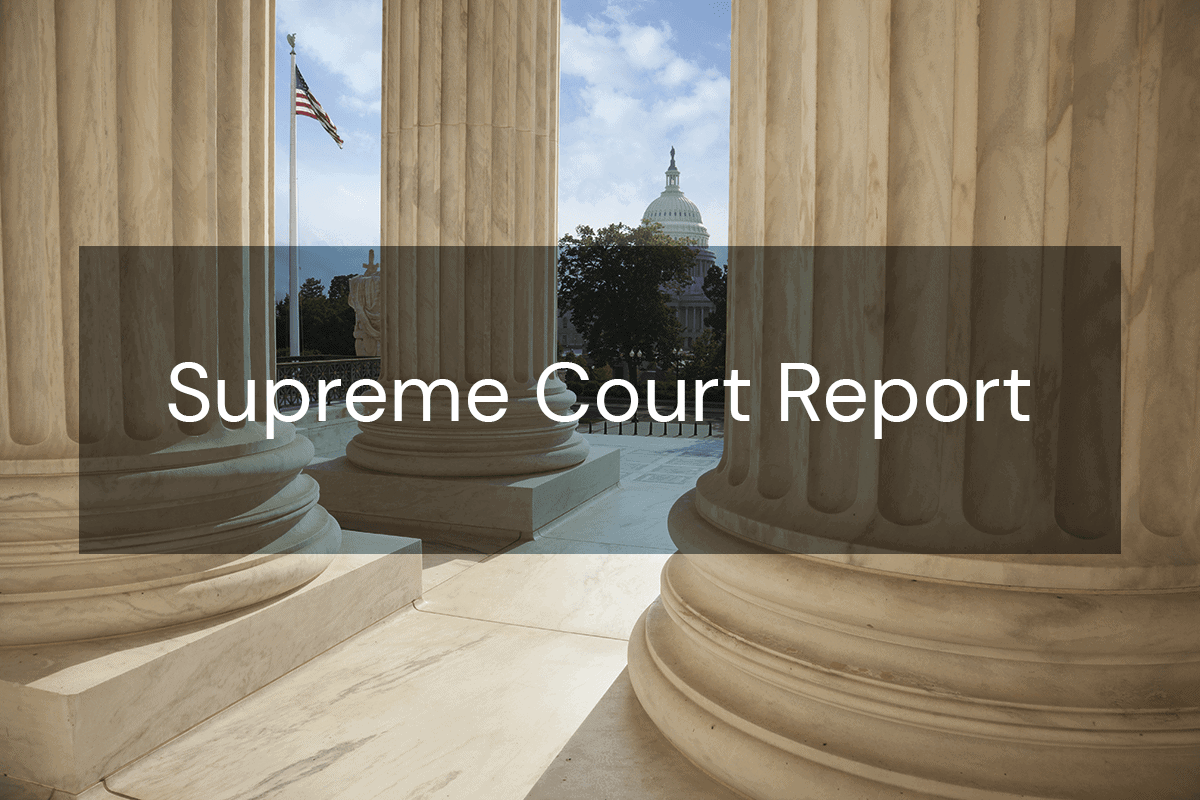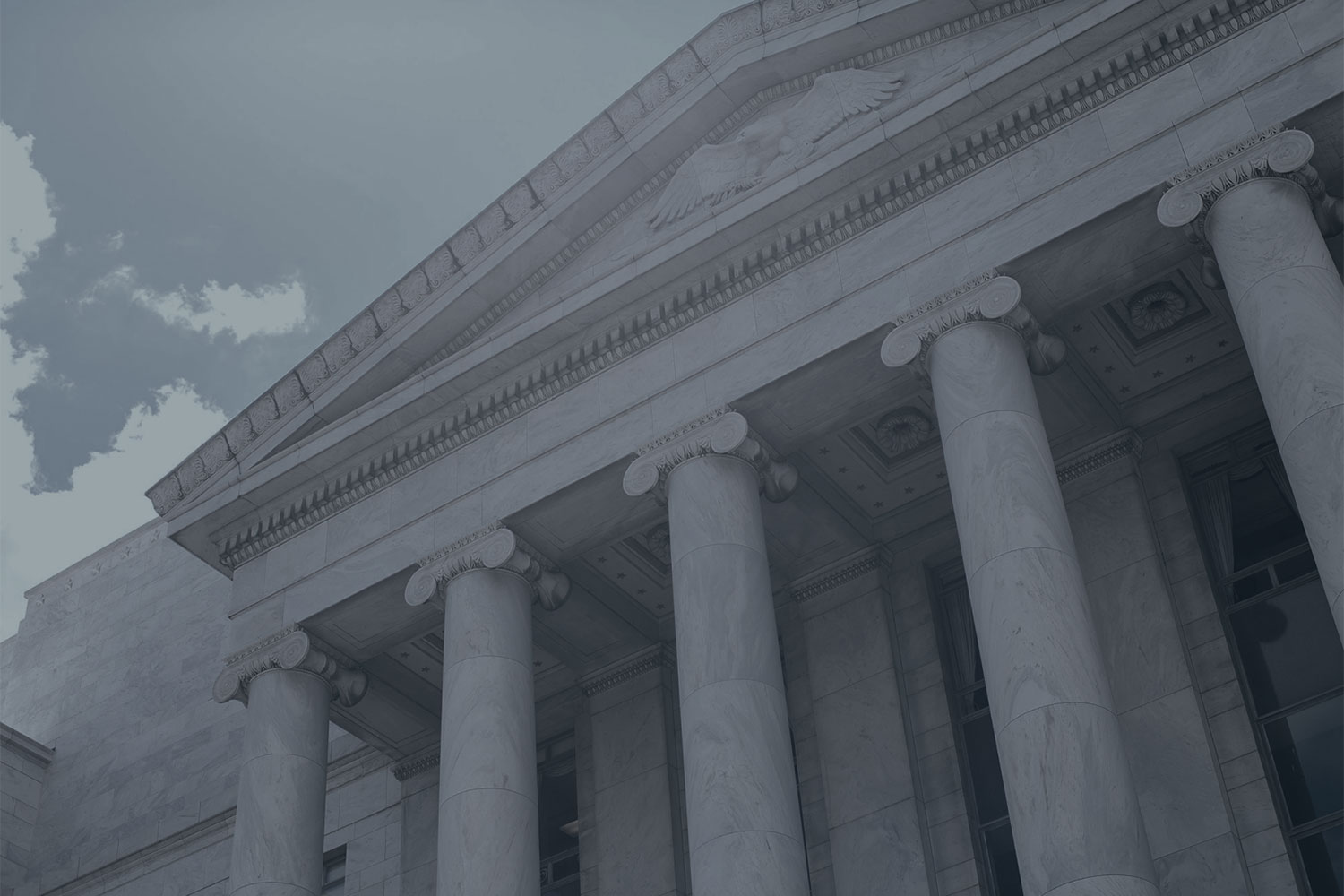Author

This Report summarizes opinions issued on January 13, 2022 (Part I); and cases granted review on January 10, 2022 (Part II).
Opinion: National Federation of Independent Business v. Department of Labor, Occupational Safety and Health Administration, 21A244
National Federation of Independent Business v. Department of Labor, Occupational Safety and Health Administration, 21A244. By a 6-3 vote, the Court stayed the Biden Administration’s implementation of a vaccine mandate promulgated by the Occupational Safety and Health Administration because the challengers—the National Federation of Independent Business and a coalition of states led by Ohio—“are likely to succeed on the merits of their claim that the Secretary [of Labor] lacked authority to impose the mandate.” The OSHA mandate requires employers with more than 100 employees to “develop, implement, and enforce a mandatory COVID-19 vaccination policy,” under which employees must either submit to vaccination or submit to a masking and weekly testing requirement.
The Secretary of Labor promulgated the vaccine mandate, which “applies to roughly 84 million Americans,” as an emergency temporary standard (ETS) on November 5, 2021. Unlike an ordinary administrative rule that must “be developed using a rigorous process that includes notice, comment, and an opportunity for public hearing,” an ETS “may ‘take immediate effect upon publication in the Federal Register.’” But an OSHA ETS is “permissible . . . only in the narrowest of circumstances: the Secretary must show (1) ‘that employees are exposed to grave danger from exposure to substances or agents determined to be toxic or physically harmful or from new hazards,’ and (2) that the ‘emergency standard is necessary to protect employees from such danger.’” 29 U.S.C. §655(c)(1). Once OSHA published the ETS, “[s]cores of parties—including States, businesses, trade groups, and nonprofit organizations—filed petitions for review” in every regional Court of Appeals. The Fifth Circuit promptly stayed OSHA’s mandate. All of the challenges were then consolidated in the Sixth Circuit, which was chosen at random under 28 U.S.C. §2112(a). The Sixth Circuit, by an 8-8 vote, denied a request for initial hearing en banc made by nearly 60 challengers. Then a three-judge panel, by a 2-1 vote, “dissolved the Fifth Circuit’s stay, holding that OSHA’s mandate was likely consistent with the agency’s statutory and constitutional authority.” Disagreeing with the Sixth Circuit panel, the Court, through a per curiam opinion, stayed the OSHA vaccine mandate.
The Court held that the Occupational Safety and Health Act of 1970, on which the Secretary relied, does not “plainly authorize[]” the vaccine mandate because that statute “empowers the Secretary to set workplace safety standards, not broad public health measures.” OSHA’s vaccine mandate, explained the Court, is “a significant encroachment into the lives—and health—of a vast number of employees” and thus constitutes an exercise of agency “power[] of vast economic and political significance.” So under the major-questions doctrine, Congress had to “speak clearly” to authorize OSHA ”to regulate the hazards of daily life” and force 84 million American workers to undergo vaccination (which “cannot be undone at the end of the workday”) to protect from the “universal risk” posed by COVID-19. In the Court’s view, while Congress empowered OSHA to issue “targeted regulations” that “regulate occupation-specific risks related to COVID-19,” it did not empower OSHA to impose on nearly a third of Americans “a general public health measure,” which “fails to account for [the] crucial distinction . . . between occupational risk and risk more generally.” After all, OSHA’s “sphere of expertise” is limited to “hazards that employees face at work” and does not encompass “public health more generally.” Moreover, the Court observed that “in its half century of existence,” OSHA “has never before adopted a broad public health regulation of this kind—addressing a threat that is untethered, in any causal sense, from the workplace.” When “coupled with the breadth of authority” claimed by the Secretary, that “lack of historical precedent” signifies “that the mandate extends beyond the agency’s legitimate reach.”
Having concluded that the challengers were likely to succeed on the merits, the Court also determined that “[t]he equities do not justify withholding interim relief.” The Court, however, declined to weigh the risk “that OSHA’s mandate will force [States and employers] to incur billions of dollars in unrecoverable compliance costs and will cause hundreds of thousands of employees to leave their jobs” against the possibility “that the mandate will save over 6,500 lives and prevent hundreds of thousands of hospitalizations.” “It is not our role,” said the Court, “to weigh such tradeoffs.” Instead, “that is the responsibility of those chosen by the people through democratic processes,” and Congress “has not given [OSHA] the power to regulate public health more broadly” than “occupational dangers.”
Justice Gorsuch wrote a concurring opinion, joined by Justice Thomas and Justice Alito, in which he elaborated on the major-questions doctrine and its relationship to nondelegation principles. Stressing that “[t]he question before us is not how to respond to the pandemic, but who holds the power to do so,” Justice Gorsuch concluded that under the major-questions doctrine “that power rests with the States and Congress, not OSHA.” The major-questions doctrine, he explained, “recogniz[es] that Congress does not usually ‘hide elephants in mouseholes’” and thus “guards against” the possibility that an agency “may seek to exploit some gap, ambiguity, or doubtful expression” contained in a “broadly worded” statute “to assume responsibilities far beyond its initial assignment.” Justice Gorsuch argued that, by “protect[ing] the separation of powers,” the major-questions doctrine “is closely related to what is sometimes called the nondelegation doctrine,” which “prevent[s] Congress from intentionally delegating its legislative powers to unelected officials.”
Justice Breyer, Justice Sotomayor, and Justice Kagan issued a joint dissenting opinion. In their view, the challengers “are not ‘likely to prevail’ under any proper view of the law” because “OSHA’s rule fits the language of the applicable statutory provision” and “falls within the core of the agency’s mission: to ‘protect employees’ from ‘grave danger’ that comes from ‘new hazards’ or exposure to harmful agents.” In the dissenters’ view, the majority unjustifiably “impose[d] a limit found no place in the governing statute” by curtailing OSHA’s authority to regulate public health hazards that are not specific to the workplace. And emphasizing that, according to OSHA, the rule “will save over 6,500 lives and prevent over 250,000 hospitalizations in six months’ time,” the dissenters argued that “the balance of harms and the public interest” do not support staying OSHA’s rule. They accused the Court of “[a]cting outside of its competence and without legal basis” to “displace[] the judgments of the Government officials given the responsibility to respond to workplace health emergencies.”
[Editor’s note: Some of the language in the background section of the summary above was taken from the petition for writ of certiorari and brief in opposition.]




